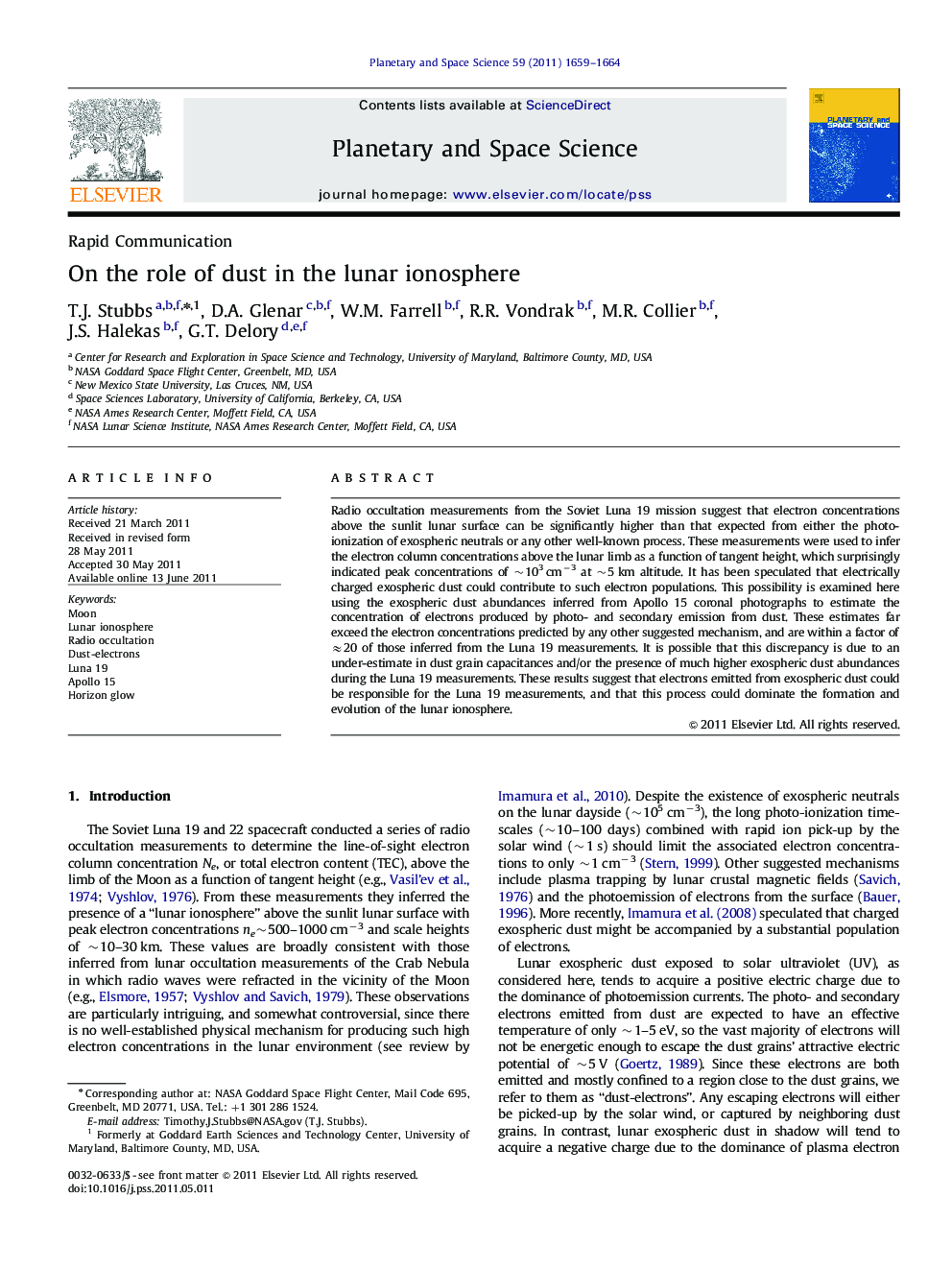| Article ID | Journal | Published Year | Pages | File Type |
|---|---|---|---|---|
| 10705312 | Planetary and Space Science | 2011 | 6 Pages |
Abstract
Radio occultation measurements from the Soviet Luna 19 mission suggest that electron concentrations above the sunlit lunar surface can be significantly higher than that expected from either the photo-ionization of exospheric neutrals or any other well-known process. These measurements were used to infer the electron column concentrations above the lunar limb as a function of tangent height, which surprisingly indicated peak concentrations of â¼103Â cmâ3 at â¼5Â km altitude. It has been speculated that electrically charged exospheric dust could contribute to such electron populations. This possibility is examined here using the exospheric dust abundances inferred from Apollo 15 coronal photographs to estimate the concentration of electrons produced by photo- and secondary emission from dust. These estimates far exceed the electron concentrations predicted by any other suggested mechanism, and are within a factor of â20 of those inferred from the Luna 19 measurements. It is possible that this discrepancy is due to an under-estimate in dust grain capacitances and/or the presence of much higher exospheric dust abundances during the Luna 19 measurements. These results suggest that electrons emitted from exospheric dust could be responsible for the Luna 19 measurements, and that this process could dominate the formation and evolution of the lunar ionosphere.
Keywords
Related Topics
Physical Sciences and Engineering
Earth and Planetary Sciences
Geophysics
Authors
T.J. Stubbs, D.A. Glenar, W.M. Farrell, R.R. Vondrak, M.R. Collier, J.S. Halekas, G.T. Delory,
